In-depth text about our three seal species
Seal hunting once played a very significant role along our coasts. Thanks to the seal, a poor fishing population gained a welcome variation in diet, train oil that lit up long winter evenings in their cottages, water-repellent leather grease, and warm furs. The fact that they also kept their biggest competitor for edible fish in check, and that hunting sometimes provided a surplus that could be traded for cash, naturally made seal hunting even more important for coastal residents.
However, the rise of industrial harvesting methods caused the prices of hides, blubber, and train oil to drop at the end of the 19th century. Seal hunting became less profitable, hunting decreased, and seal populations increased. When the number of grey seals in the Baltic Sea was at its peak in the early 1900s, the population is estimated to have reached around 100,000 animals. The ringed seal was also very common.

To reduce damage to fish and fishing gear, bounties for seals were introduced around the turn of the century, roughly simultaneously in Sweden and Finland. In the 1930s, the bounty was ten kronor per seal, equivalent to about two days’ wages in the logging industry.
The combination of bounty payments and Mauser rifles led to a resurgence in seal hunting. Despite intense hunting, enormous numbers of seals still remained in the Baltic Sea during the 1920s and 1930s. It wasn’t until the 1960s that things began to decline. Seal hunters at that time noticed that seals were becoming increasingly rare. Hunting had almost ceased. In the 1970s and 1980s, both grey and ringed seal populations declined dramatically due to environmental toxins, especially PCBs, which inhibited reproduction. Both species were protected—ringed seals in 1975 and grey seals in 1988—and professional fishermen lost their right to hunt them for protection.
But the trend reversed. The Baltic Sea became cleaner, and seals began to reproduce again. The grey seal population has recovered best. It is now growing strongly, with a reproduction rate of 7–8 percent annually along the Swedish coast, and the total population is estimated to be at least 17,000 animals.
For the ringed seal, recovery has taken much longer. The species still suffers from reproductive issues due to its long lifespan and prolonged exposure to pollutants. The population size is difficult to assess. A few years ago, Finnish researchers estimated around 4,000 ringed seals in the Bothnian Bay, with an annual growth rate of about five percent. The grey seal population along Norway’s coast was estimated in 2002 to be just under 5,000, and the harbour seal population slightly below 8,000.
Due to the strong growth of the grey seal population, seal concentrations—and thus damage to fishing gear—have again become a reality. Seals cause significant economic losses for commercial fishing and also negatively affect supplementary and recreational fishing.
As a result, Finland cautiously reintroduced licensed grey seal hunting in the late 1990s. In Sweden, hunting resumed in 2001, when the Environmental Protection Agency issued permits to cull 150 grey seals along the east coast. Quotas have since increased in both countries, and hunting seasons have been coordinated to start on April 16. In Norway, the authorities set annual quotas for grey and harbour seals by region, and hunters must report each seal taken. In 2004, the total quota was just under 1,200 grey seals and 950 harbour seals. Hunting of ringed seals is allowed in the northern coastal areas, and harp seals may be hunted along the entire Norwegian coastline.
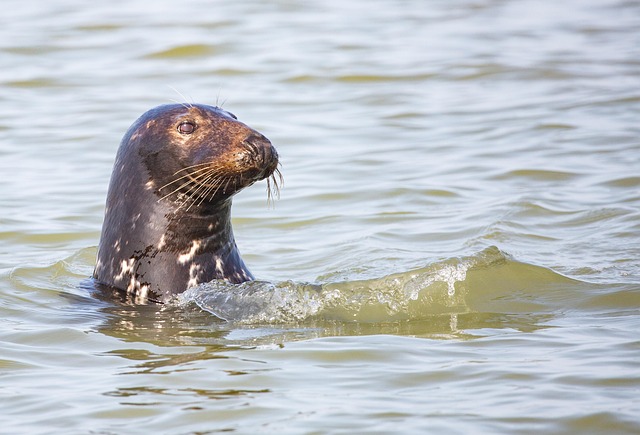
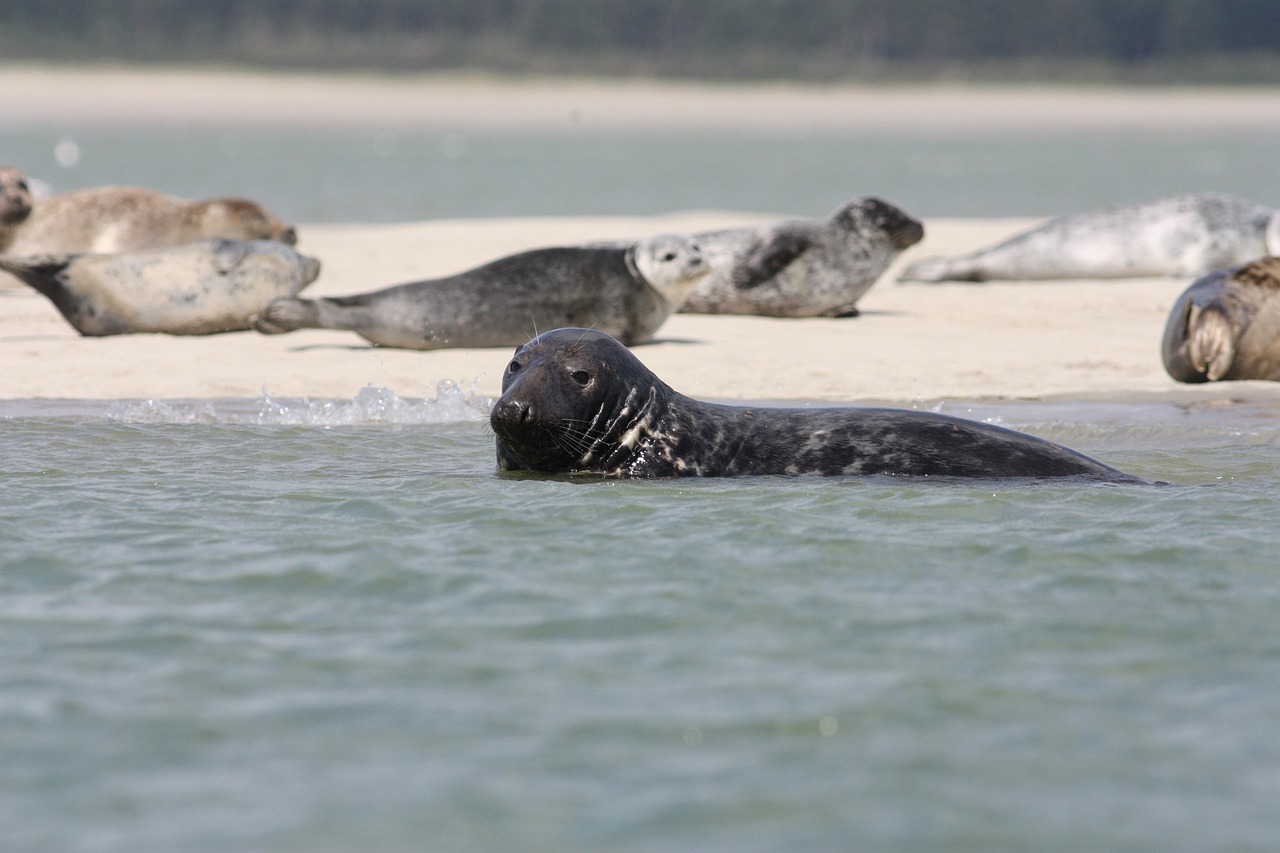
The grey seal (Gråsäl) is the largest seal species in the Baltic Sea. An old male can reach three meters in length and weigh up to 300 kilos. The Atlantic subspecies can be even larger. Grey seals are found in the outermost archipelagos, where they haul out on flat, low rocks to rest and sunbathe. They move over vast marine areas, often crossing territorial borders between the countries surrounding the Baltic Sea. Despite this mobility, grey seals also remain fairly stationary around specific haul-out sites for long periods. Their diet is dominated by herring, cod, and salmonids.
Grey seals are social and live in groups. They give birth on old drift ice, deep inside bays. The pups are large and well-adapted from birth, often weighing 15–20 kg. After just a few weeks, the mother leaves the pup behind, having lost up to half her body fat. In May, young seals haul out to rest and sunbathe, and after a couple of months, they begin to hunt on their own. Unlike most other seals, grey seals do not mate during the ice period. The female comes into estrus in July, and mating occurs in open water. The fertilized egg remains dormant until implantation in the fall, resulting in just one pup per year. Grey seals have been shown to travel great distances—some individuals have swum from the Bothnian Bay to the Norwegian coast and back.
The grey seal’s head profile is long and lacks a defined forehead, creating a nearly straight line. Fur coloration varies: old males can be uniformly dark, while females and juveniles are lighter and often mottled.
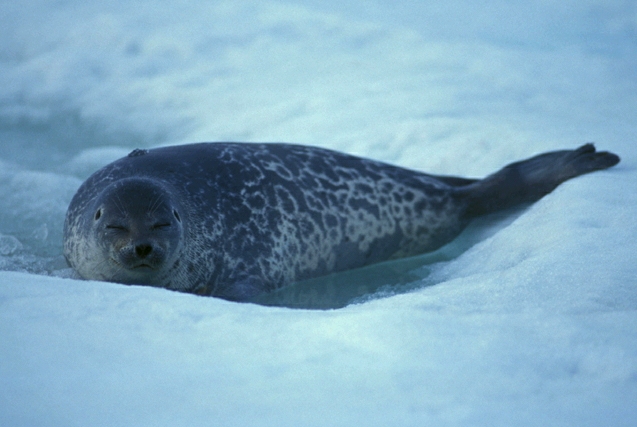
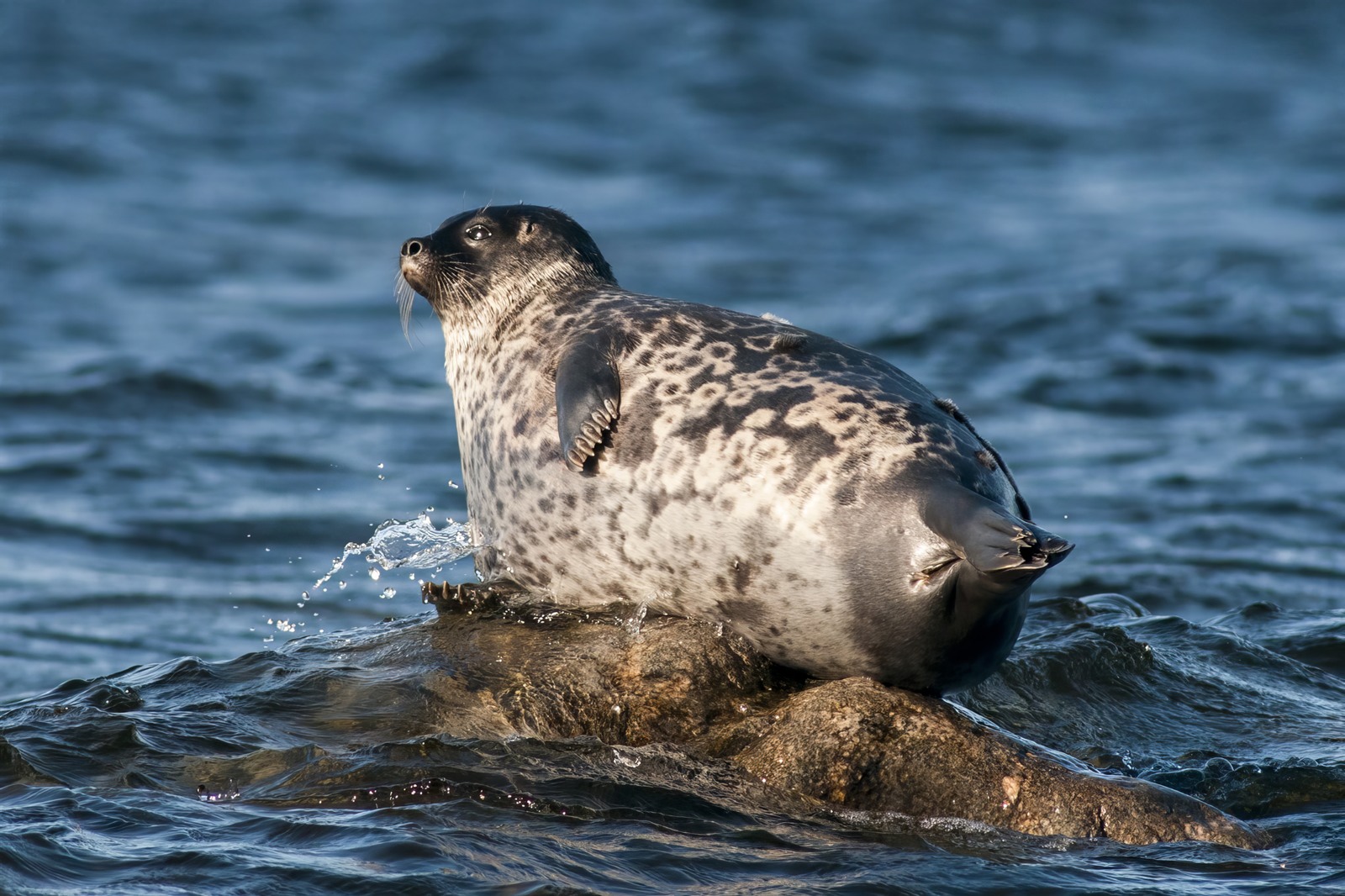
The ringed seal (Vikare) is smaller than the grey seal. A male can weigh up to 110 kilos. Its fur is grey, brownish-grey, or dark brown with lighter, ring-shaped spots. The diet consists of various types of fish. Ringed seals are solitary or pair-bonded and prefer fjords and river mouths with brackish or freshwater. They give birth near the ice edge, often in ice caves. Mating occurs soon after birth.
The species is long-lived and has struggled to recover from PCB-related reproductive damage. The head shape distinguishes it from the grey seal—it has a round head with a prominent forehead and short snout. It is less mobile and tends to remain within limited areas.
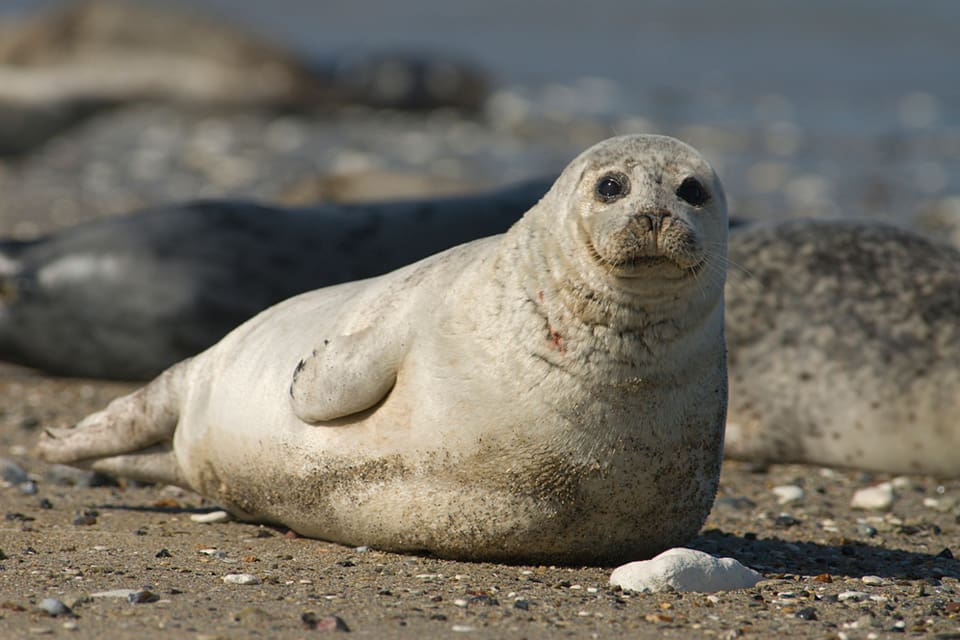
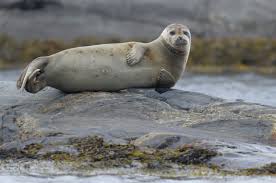
The harbour seal (Knubbsäl) is the smallest of the three seal species, weighing around 100 kilos. It is easily recognized by its rounder head with a distinct forehead and large, dark eyes. The fur is light grey with large black spots, especially on the back and sides. It gives birth in February–March in the northern parts of the Baltic Sea.
The harbour seal is most common along Norway’s coast, particularly in sheltered fjords and inlets such as Hvaler and the Oslofjord. It is less mobile than the grey seal and usually lives alone or in small groups.
In 2002, the Norwegian population was estimated at just under 8,000 individuals. Hunting is regulated and requires reporting.
The early start to the hunting season means seal hunting in the Baltic Sea begins while ice still covers the water or has just broken up—particularly in the Bothnian Bay and along the Finnish coast. Snowmobiles are often needed to reach the ice. Their noise usually gives the seals enough warning to disappear. A successful hunt requires spotting a seal from the snowmobile and sneaking up on its location. Ice hunting huts are often placed near the seal’s breathing holes.
Hunting alone is difficult. The assistant often waits at a distance while the hunter approaches the seal.
It’s often very difficult to tell whether the seal is still in place, and even harder to get close without it diving into the water. Success depends on arriving in time and avoiding detection. A well-camouflaged silhouette, silent movement, and positioning with the wind in the right direction are crucial. Many hunters wait for hours in icy cold with rifles ready, hoping for an opportunity.
When shooting a seal, a shot to the head or lungs is necessary to ensure a quick kill. This prevents the seal from escaping into the water. The thick blubber layer otherwise causes the body to sink quickly, making recovery difficult.
Shooting seals in the water is prohibited, as it’s often impossible to verify the hit. As a result, seal hunting occurs almost exclusively on ice or land. Many hunters have completed government training to qualify for the required licenses.
In Sweden, the Environmental Protection Agency sets quotas and allocates them to counties. The hunt is license-based; only licensed hunters may participate. Recreational and commercial fishers can also apply for permits to conduct protective hunting.
Seal hunting has also become a part of wildlife management. EU-funded projects have been launched to collect data on seals, their movements, health, and age. Hunters collect tissue samples and conduct fat analyses. Seal hunters have proven to be an important source of knowledge about population development.
Seal meat is rarely eaten today and is difficult to sell. The only current barrier to seal hunting is food safety legislation. Once a valuable economic and cultural resource, seal products have now become by-products. The blubber can still be rendered into oil, which was once an export commodity.
